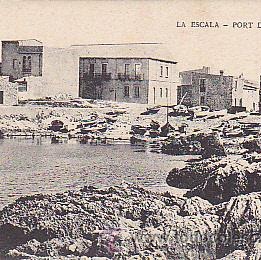David G Guillot
age ~84
from Tremonton, UT
- Also known as:
-
- David Te Guillot
- Phone and address:
-
101 Amber Ave, Tremonton, UT 84337
4352577358
David Guillot Phones & Addresses
- 101 Amber Ave, Tremonton, UT 84337 • 4352577358
- Salt Lake City, UT
- 101 Amber Ave, Tremonton, UT 84337
Work
-
Company:Orbital atk1973 to 2006
-
Position:Research scientist
Education
-
Degree:Doctorates, Doctor of Philosophy
-
School / High School:Brigham Young University1962 to 1965
-
Specialities:Organic Chemistry
Emails
Industries
Chemicals
Us Patents
-
Epdm Rocket Motor Insulation
view source -
US Patent:6566420, May 20, 2003
-
Filed:Jan 12, 2000
-
Appl. No.:09/481709
-
Inventors:David G. Guillot - Tremonton UT
Albert R. Harvey - Brigham City UT -
Assignee:Alliant Techsystems Inc. - Edina MN
-
International Classification:C08L 900
-
US Classification:523138, 524492, 524526, 5253317, 5253323, 602001, 60204
-
Abstract:A novel and improved EPDM formulation for a solid propellant rocket motor is described wherein hexadiene EPDM monomer components are replaced by alkylidene norbornene components and with appropriate adjustment of curing and other additives functionally-required rheological and physical characteristics are achieved with the desired compatibility with any one of a plurality of solid filler materials, e. g. powder silica, carbon fibers or aramid fibers, and with appropriate adhesion and extended storage or shelf life characteristics.
-
Epdm Rocket Motor Insulation
view source -
US Patent:6787586, Sep 7, 2004
-
Filed:Dec 3, 2002
-
Appl. No.:10/310005
-
Inventors:David G. Guillot - Tremonton UT
Albert R. Harvey - Brigham City UT -
Assignee:Alliant Techsystems Inc. - Edina MN
-
International Classification:C08L21018
-
US Classification:523138, 524492, 524495, 524526, 5253317, 602001, 60204
-
Abstract:A novel and improved EPDM formulation for a solid propellant rocket motor is described wherein hexadiene EPDM monomer components are replaced by alkylidene norbornene components, and, with appropriate adjustment of curing and other additives, functionally required rheological and physical characteristics are achieved with the desired compatibility with any one of a plurality of solid filler materials, e. g. , powder silica, carbon fibers or aramid fibers, and with appropriate adhesion and extended storage or shelf-life characteristics.
-
Method Of Insulating A Case Of A Solid Propellant Rocket Motor
view source -
US Patent:6893597, May 17, 2005
-
Filed:Dec 21, 2000
-
Appl. No.:09/747192
-
Inventors:David G. Guillot - Tremonton UT, US
-
Assignee:Alliant Techsystems Inc. - Edina MN
-
International Classification:B29C065/00
-
US Classification:264267, 264129, 26432818, 264148, 264175
-
Abstract:This method permits manufacturing EPDM rocket motor insulation in which carbon fibers are dispersed and immobilized in the EPDM polymeric matrix but are not excessively fractured or fragmentized, i. e. , broken into smaller fragments, when encountering degrees of shear necessary to homogeneously or otherwise distribute or disperse the carbon fibers in the EPDM polymeric matrix. The method is substantially solvent free and is performed via distributive/reduced shear mixing to distribute the fragile carbon fibers into a rubber matrix without excessive damage. According to one embodiment, at least about 50% of the elastomer composition introduced into the mixing apparatus is liquid EPDM terpolymer having sufficiently low molecular weight and high diene content to permit dispersion of the carbon fibers in the EPDM without substantial fragmentation of the fibers. According to another embodiment, mixing takes place in a kneader capable of rotating a screw having a discontinuous screw thread about the screw axis while superimposing an axially reciprocating stroke to the screw. The kneader imparts low shear distributive mixing of the carbon fibers in the EPDM terpolymer.
-
Polybenzoxazole-Filled Nitrile Butadiene Rubber Compositions
view source -
US Patent:7358314, Apr 15, 2008
-
Filed:Aug 18, 2005
-
Appl. No.:11/207855
-
Inventors:Himansu M. Gajiwala - Layton UT, US
David G. Guillot - Tremonton UT, US -
Assignee:Alliant Techsystems Inc. - Edina MN
-
International Classification:C08F 36/06
C08F 136/04
C06D 5/00 -
US Classification:526335, 526260, 602001, 60204, 102291
-
Abstract:An insulation composition that comprises at least one nitrile butadiene rubber (“NBR”) having an acrylonitrile content that ranges from approximately 26% by weight to approximately 35% by weight and polybenzoxazole (“PBO”) fibers. The NBR may be a copolymer of acrylonitrile and butadiene and may be present in the insulation composition in a range of from approximately 45% by weight to approximately 56% by weight of a total weight of the insulation composition. The PBO fibers may be present in a range of from approximately 3% by weight to approximately 10% by weight of a total weight of the insulation composition. A rocket motor including the insulation composition and a method of insulating a rocket motor are also disclosed.
-
Epdm Rocket Motor Insulation
view source -
US Patent:7371784, May 13, 2008
-
Filed:Aug 31, 2004
-
Appl. No.:10/931778
-
Inventors:David G. Guillot - Tremonton UT, US
Albert R. Harvey - Brigham City UT, US -
Assignee:Alliant Techsystems Inc. - Edina MN
-
International Classification:F02K 9/34
C08K 3/04
C08K 3/36 -
US Classification:523138, 524492, 524495
-
Abstract:A novel and improved EPDM formulation for a solid propellant rocket motor is described wherein hexadiene EPDM monomer components are replaced by alkylidene norbornene components, and, with appropriate adjustment of curing and other additives, functionally required rheological and physical characteristics are achieved with the desired compatibility with any one of a plurality of solid filler materials, e. g. , powder silica, carbon fibers or aramid fibers, and with appropriate adhesion and extended storage or shelf-life characteristics.
-
Method Of Insulating A Case Of A Solid Propellant Rocket Motor
view source -
US Patent:7410607, Aug 12, 2008
-
Filed:Sep 10, 2004
-
Appl. No.:10/938446
-
Inventors:David G. Guillot - Tremonton UT, US
-
Assignee:Alliant Techsystems Inc. - Minneapolis MN
-
International Classification:B29C 70/02
B29C 70/28 -
US Classification:264241, 264238, 26432818
-
Abstract:This method permits manufacturing EPDM rocket motor insulation in which carbon fibers are dispersed and immobilized in the EPDM polymeric matrix but are not excessively fractured or fragmentized, i. e. , broken into smaller fragments, when encountering degrees of shear necessary to homogeneously or otherwise distribute or disperse the carbon fibers in the EPDM polymeric matrix. The method is substantially solvent free and is performed via distributive/reduced shear mixing to distribute the fragile carbon fibers into a rubber matrix without excessive damage. According to one embodiment, at least about 50% of the elastomer composition introduced into the mixing apparatus is liquid EPDM terpolymer having sufficiently low molecular weight and high diene content to permit dispersion of the carbon fibers in the EPDM without substantial fragmentation of the fibers. According to another embodiment, mixing takes place in a kneader capable of rotating a screw having a discontinuous screw thread about the screw axis while superimposing an axially reciprocating stroke to the screw. The kneader imparts low shear distributive mixing of the carbon fibers in the EPDM terpolymer.
-
Method Of Insulating A Rocket Motor
view source -
US Patent:53523121, Oct 4, 1994
-
Filed:Aug 6, 1992
-
Appl. No.:7/927135
-
Inventors:David G. Guillot - Tremonton UT
-
Assignee:Thiokol Corporation - Ogden UT
-
International Classification:B32B 3120
B65H 8106
C09K 2114
F02K 908 -
US Classification:156172
-
Abstract:Rocket motor insulation compositions are provided. An important component of such insulation compositions is a thermoplastic liquid crystal polymer. Such a polymer provides an ablative insulation which has good performance characteristics during operation of the rocket motor. One such thermoplastic liquid crystal polymer is a wholly aromatic polyester known as VECTRA. RTM. The insulation may also include fillers such as fibrous fillers and particulate fillers. Typical fibrous fillers include glass or carbon fibers. Typical particulate fillers include materials such as silica, alumina, powdered coal, and the like.
-
Crystallization Resistant, Low Modulus Elastomer For Flexible Bearings
view source -
US Patent:56440006, Jul 1, 1997
-
Filed:Mar 10, 1989
-
Appl. No.:7/322273
-
Inventors:David G. Guillot - Tremonton UT
-
Assignee:Thiokol Corporation - Ogden UT
-
International Classification:C08L 900
C08L 700 -
US Classification:525236
-
Abstract:A low shear modulus vulcanizate for construction of flexible bearings, particularly for rocket motors, consisting essentially of a mixture of two natural or synthetic rubber copolymers, the first having about 92% cis-1,4-polyisoprene and about 8% trans-1,4-polyisoprene moieties and the second having about 98% by weight cis-1,4-polyisoprene and about 2% by weight trans-1,4-polyisoprene moieties. The composition is lightly filled and contains a low proportion of sulfur, so the vulcanizate has the required low shear modulus, low rate of thermal crystallization at low temperatures, and an acceptably high shear strength.
Resumes

David Guillot
view sourceLocation:
Tremonton, UT
Industry:
Chemicals
Work:
Orbital Atk 1973 - 2006
Research Scientist
Research Scientist
Education:
Brigham Young University 1962 - 1965
Doctorates, Doctor of Philosophy, Organic Chemistry Brigham Young University
Bachelors, Bachelor of Science, Chemistry
Doctorates, Doctor of Philosophy, Organic Chemistry Brigham Young University
Bachelors, Bachelor of Science, Chemistry
Medicine Doctors

David J. Guillot
view sourceSpecialties:
Family Medicine
Work:
Woodworth Family Medicine
9372 Hwy 165 S, Woodworth, LA 71485
3184849588 (phone), 3184849590 (fax)
9372 Hwy 165 S, Woodworth, LA 71485
3184849588 (phone), 3184849590 (fax)
Education:
Medical School
Louisiana State University School of Medicine at Shreveport
Graduated: 1994
Louisiana State University School of Medicine at Shreveport
Graduated: 1994
Procedures:
Destruction of Benign/Premalignant Skin Lesions
Hearing Evaluation
Skin Tags Removal
Vaccine Administration
Hearing Evaluation
Skin Tags Removal
Vaccine Administration
Conditions:
Acute Bronchitis
Acute Pharyngitis
Acute Sinusitis
Allergic Rhinitis
Anxiety Phobic Disorders
Acute Pharyngitis
Acute Sinusitis
Allergic Rhinitis
Anxiety Phobic Disorders
Languages:
English
Spanish
Spanish
Description:
Dr. Guillot graduated from the Louisiana State University School of Medicine at Shreveport in 1994. He works in Woodworth, LA and specializes in Family Medicine.

David John Guillot
view sourceSpecialties:
Family Medicine
Education:
Louisiana State University at Shreveport (1994)
Classmates

David Guillot
view sourceSchools:
Fifth Ward High School Marksville LA 1964-1968
Community:
Joy Bettevy, Irene Guillot, Sindy Gaspard

David Guillot
view sourceSchools:
Glaydin School & Camp Leesburg VA 1969-1975

David Guillot, Ben C. Rai...
view source
Ben C. Rain High School, ...
view sourceGraduates:
David Guillot (1994-1997),
Debbie Rodgers (1963-1967),
Leanne Potts (1979-1983),
Annette McCoy (1987-1991)
Debbie Rodgers (1963-1967),
Leanne Potts (1979-1983),
Annette McCoy (1987-1991)

Glaydin School & Camp...
view sourceGraduates:
Tammy Vuleta (1974-1977),
Virginia Hahn (1971-1975),
David Guillot (1969-1975)
Virginia Hahn (1971-1975),
David Guillot (1969-1975)

Central Lafourche High Sc...
view sourceGraduates:
Claudine Blanchard (1984-1988),
Shannon Pledger (1994-1998),
David Guillot (1976-1980),
Jaeda Goodwin Crosby (1995-1999)
Shannon Pledger (1994-1998),
David Guillot (1976-1980),
Jaeda Goodwin Crosby (1995-1999)

Moreauville High School A...
view sourceGraduates:
David Guillot (1993-1997),
Linda Ducote (1962-1966),
Sandra Batiste (1978-1982),
Paul Rachal (1971-1975),
John Kimberly (1937-1941),
Ethel Brulte (1967-1971)
Linda Ducote (1962-1966),
Sandra Batiste (1978-1982),
Paul Rachal (1971-1975),
John Kimberly (1937-1941),
Ethel Brulte (1967-1971)
Youtube
Flickr
Plaxo

David GUILLOT
view sourceChef de Projet at SFR

David Guillot
view sourceFriends:
Loc Brisset, Marc Gallotte, Alison Pruvost, David Guillot. Photo Log in to contact David Guillot.
David Guillot. Photo Log in to contact David Guillot.

Juan David Guillot Hoyos
view source
Joel David Rojas Guillot
view source
David Guillot
view source
David Guillot
view source
David Guillot Martin
view source
Juan David Guillot Hoyos
view source
David Guillot
view sourceMyspace
Googleplus

David Guillot
Work:
The Kings of the House - The vassal of the Kings

David Guillot

David Guillot

David Guillot

David “El Gotim” Guillot

David Guillot

David Guillot

David Guillot
Get Report for David G Guillot from Tremonton, UT, age ~84















